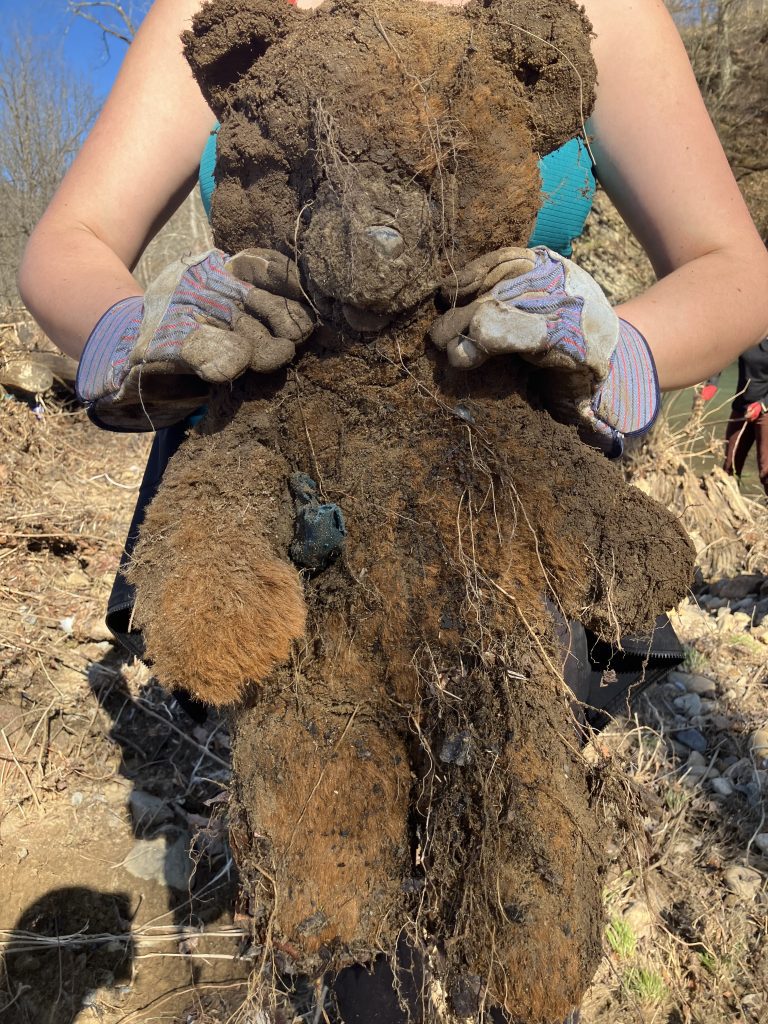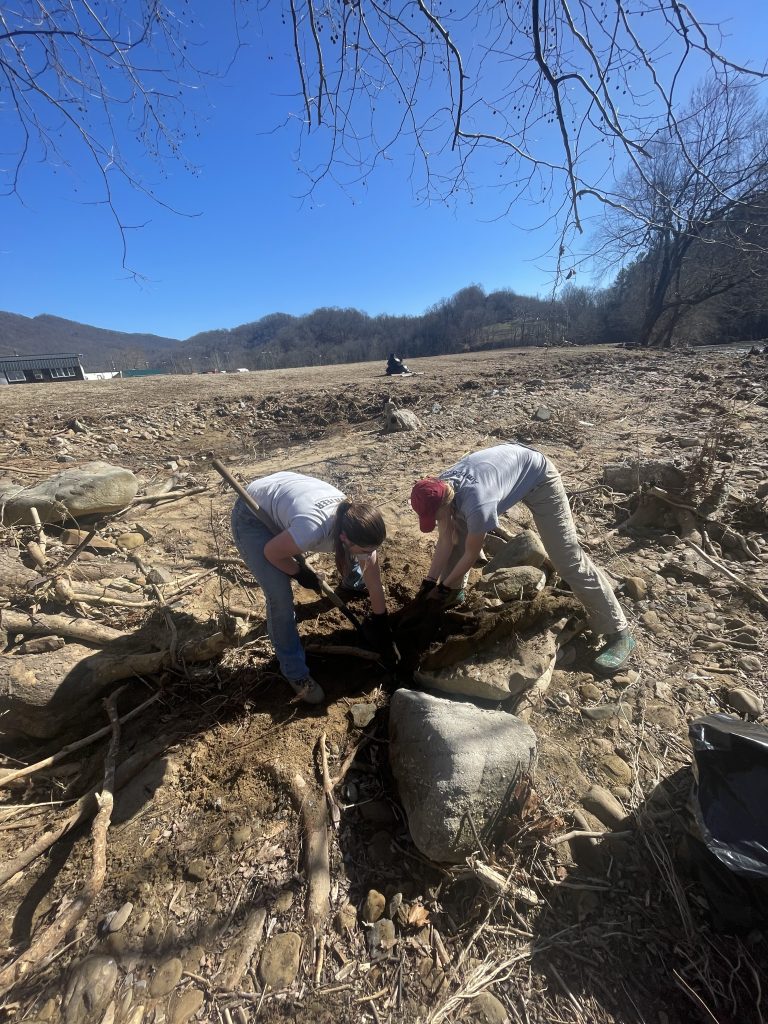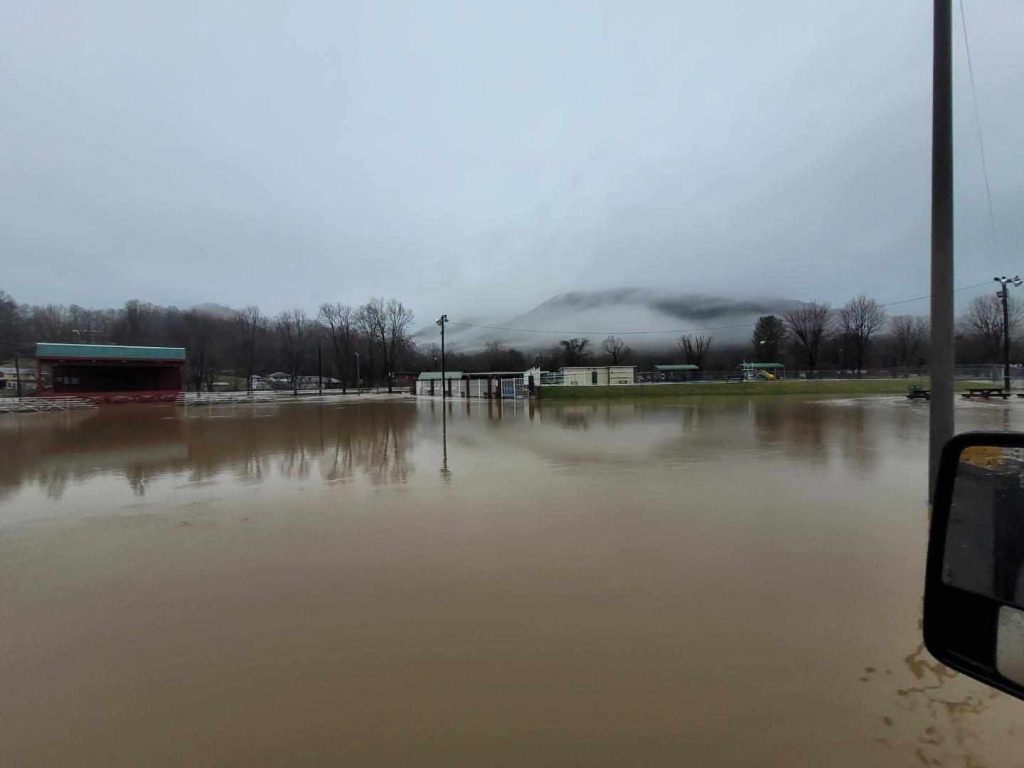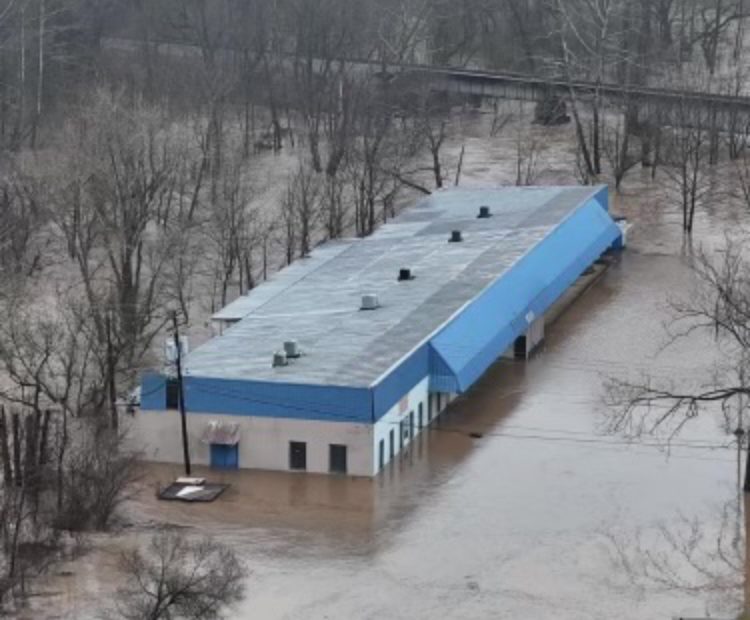Front Porch Blog
There is something particularly heartbreaking about pulling a baby’s sock from the muddy banks of the Powell River while the current administration dismantles funding for community-led efforts to better prepare for floods like this one.
On Feb. 25, several Appalachian Voices employees visited the town of Pennington Gap to offer help removing flood debris from Leeman Field, a popular park and community gathering area in the town. We realized quickly that our definition of debris needed to be altered. Cleaning flood debris sounds like mucking out crumbling buildings and discarding loose branches and dislodged rocks. What I did not expect was finding an abundance of household objects that, together, tell a story of the need for better disaster preparedness in Central Appalachia.

A non-comprehensive list of items found in the floodwaters includes four stuffed animals, a dog bowl, prescription pill bottles, tail lights, a frying pan, a muffin tin, a wheelchair, hundreds of pieces of clothing, a spatula, a baby’s mitten, various undergarments, a cook pot, broken china and ceramics, a toy truck, a decorative cross, two hair brushes, plastic flowers, various tools, winter scarves and an incredible number of rugs.
The story of a quarter-mile stretch
We arrived at Leeman Field in the morning, and four of us happily agreed to tackle the flood debris along the banks of the Powell River by following the greenway, a paved path that allows walkers access to the water. We packed 15 contractor bags, a rake and a shovel, ready to complete the loop over the course of our eight-hour day. However, we quickly realized that merely the first bend we could see in the Powell would require our attention for the majority of the day, as well as those 15 bags and more. As we loosened heavy carpet, liberated tires and coiled what felt like miles of cords and hoses, we considered the types of objects we were finding and how those tell a story of what the residents of Pennington Gap experienced in the latest flooding event.

The abundance of rugs, thick like the ones that can be found on a front porch reading “Welcome,” conjured images of people living in homes that are in the 100-year floodplain but passed down from generation to generation, with residents perhaps sitting on outdoor furniture like the plastic adirondack chair we found in pieces, and watching the water levels rise, hoping and praying that they wouldn’t lose the house that means so much to the family.
The children’s stuffed animals and clothing along with pet bowls and rope chew toys put us in mind of the most vulnerable victims of flooding. Children who are too young to fully understand what is happening only know that their parents are upset and that they have lost the comfort of their belongings that give them a sense of normalcy.
A history of flooding
Climate change will impact the entire nation, but perhaps those most affected will be low-income families in impoverished, rural areas where a history of extractive industry has worsened the impacts of flooding.
On Feb. 16, the Powell River near Jonesville was running at almost 19,000-cubic feet per second, about 8.5 times higher than base flow conditions. This event was not an anomaly. The Powell River has flooded in recent history, including during Hurricane Helene last year and in 2018, causing significant damage to roads from mudslides. Pennington Gap is in the 85th-90th percentile for low income nationally, and many of the residents live on a fixed income, meaning emergency repairs and a refrigerator full of spoiled food don’t have a line item on the budget. Roads in the town were rendered unsafe by floodwaters, cutting off access to emergency infrastructure. In addition to losing household items and sentimental memorabilia, residents of Pennington Gap faced losing meals and emergency services.

Community Change
The people of Pennington Gap are committed to their town’s resilience and have plans to address the flooding in town. In 2024, the town was awarded a grant from the Virginia Department of Conservation and Recreation’s Community Flood Preparedness Fund to devise a plan for nature-based flood solutions along the greenway path. David Hirschman of Hirschman Water and Kip Mummaw of Ecosystem Solutions are refining a report on potential projects including demolition and redevelopment of the Cas Walker building, stream bank restoration and water infrastructure work along Kentucky Street.
The park is also one of the primary sites for new renewable energy and energy-efficient installations funded through the Department of Energy’s SOLVE-IT prize, which will greatly reduce the energy costs for operating the park year-round. As of the publication of this blog, SOLVE IT funds are already paying for energy-efficient LED lighting to be installed along the greenway.

These projects were tied to a federal grant from the Environmental Protection Agency: the Environmental Justice Collaborative Problem Solving grant. Appalachian Voices received this award to help fund projects we’re developing with Pennington Gap and four other communities. We hosted two listening sessions in Pennington Gap in 2024, where individuals were encouraged to share the challenges the town faces as well as propose solutions, and flooding was one of the top named issues. Individuals also expressed the need for community gathering spaces and the demolition of abandoned buildings.
Based on those listening sessions, the community made plans to repurpose a flood-prone area. The town, in partnership with Appalachian Voices, was slated to use money from the EPA grant to hire local contractors to demolish the asbestos-laden former Cas Walker grocery store so that the town could repurpose the area for recreation while implementing flood mitigation recommendations. However, in February the EPA terminated the grant that would have covered the cost of the building’s demolition.
Currently, the partnerships continue and work on related projects is proceeding while we appeal the grant’s termination, including a March listening session where residents shared productive, hopeful feedback about flood mitigation in the community.
Resilience in the face of natural disasters is not just for the well-off and well-connected — it is for the resident of the family home sitting on the porch with a cup of coffee, watching the Powell River flow peacefully without fear of losing everything. Resilience is needed in Pennington Gap.
PREVIOUS
NEXT

Leave a comment
Your email address will not be published. Required fields are marked *

Leave a Comment